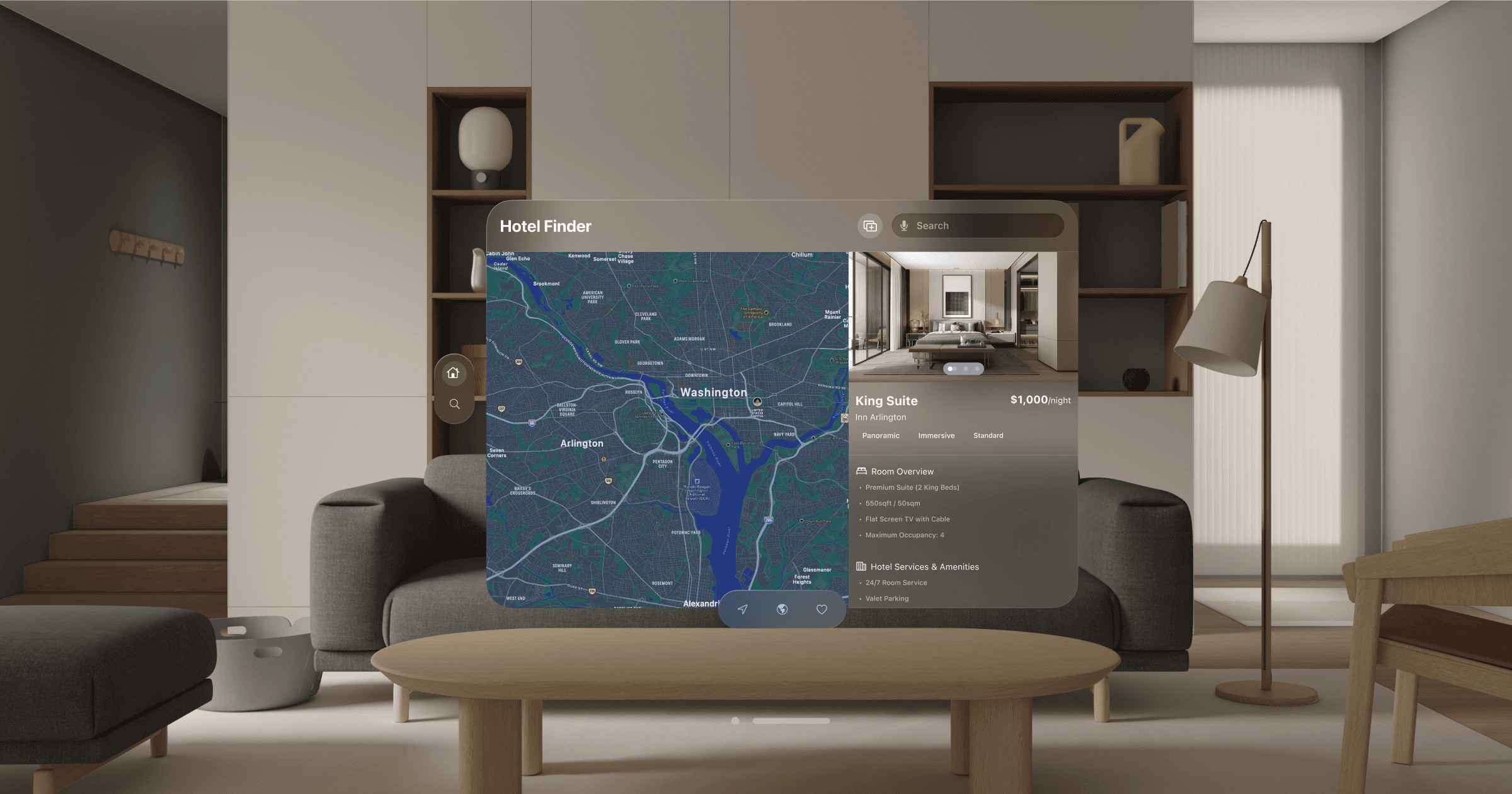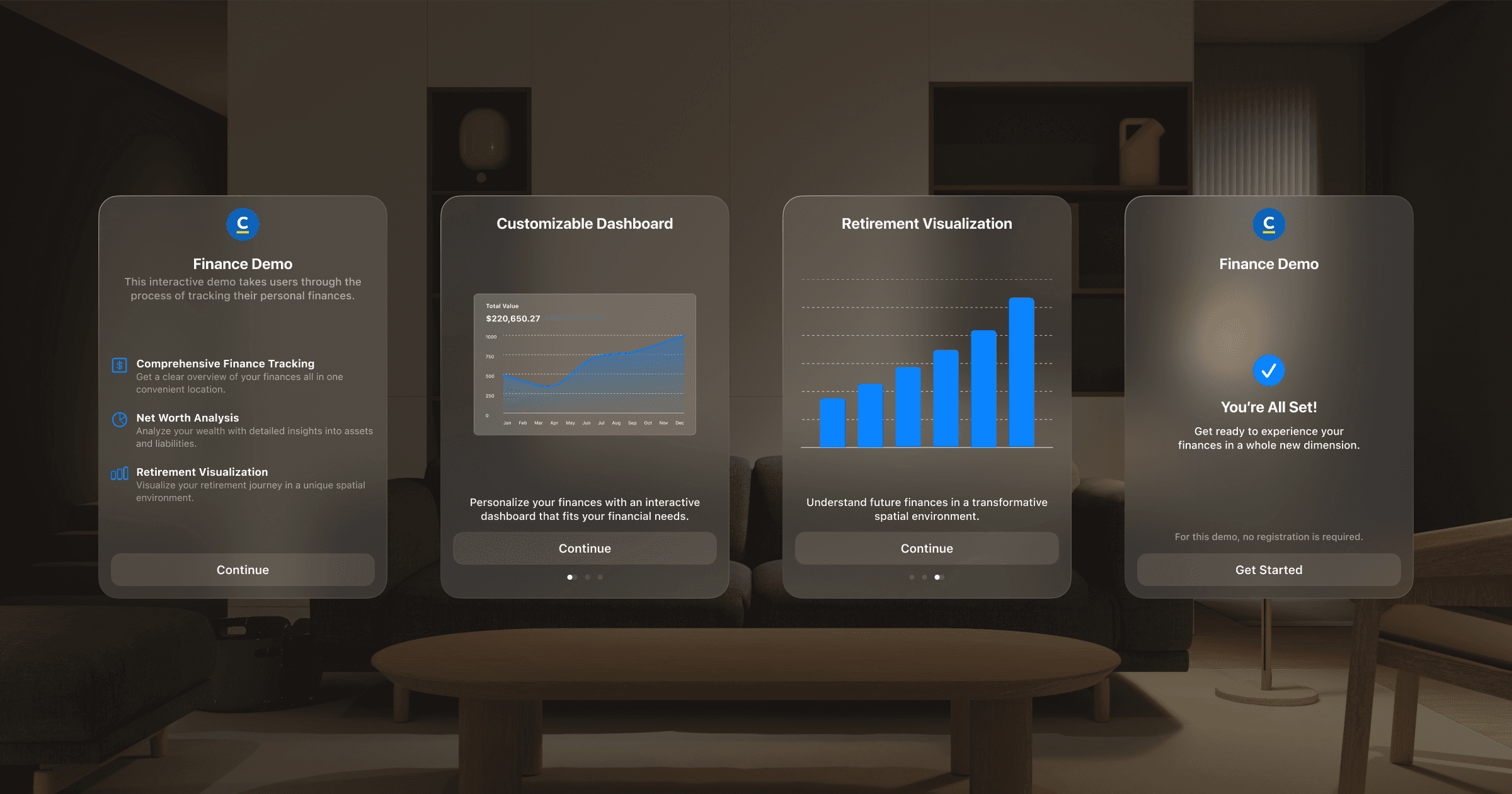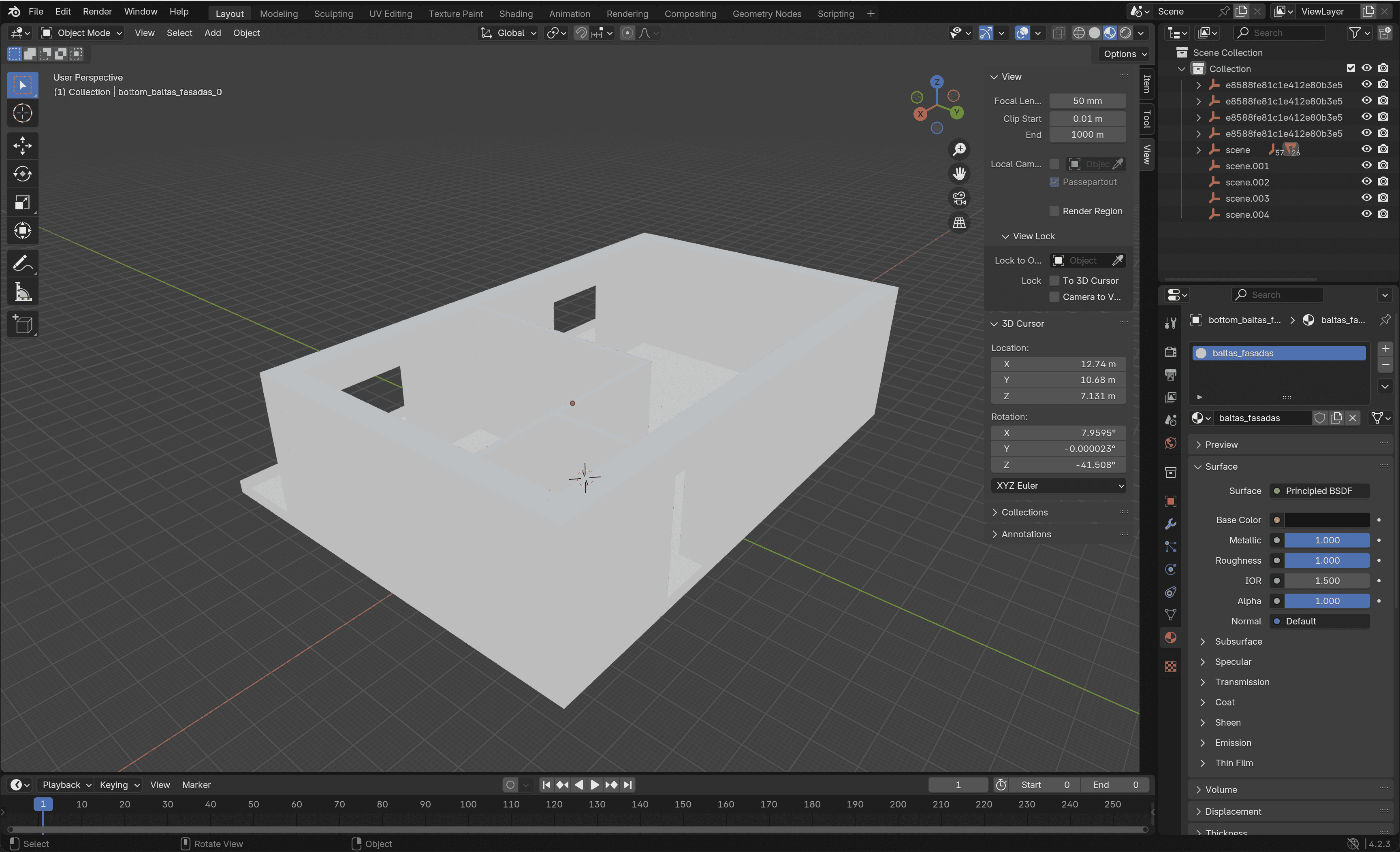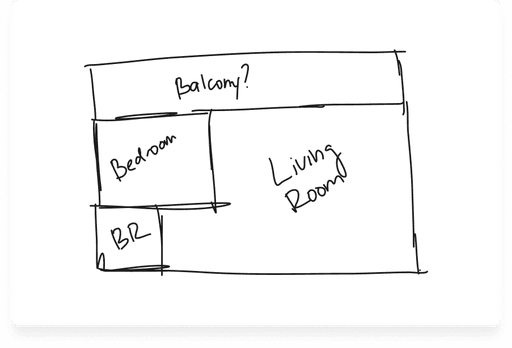Spatial Computing: Vision Pro Apps
2024 - Product, Interaction design
Background
I've always had a personal interest in AR/VR technology, and personal experience building applications using Google ARCore. When Apple Vision Pro launched in early 2024, I recognized an opportunity to revisit the space and eventually led me to establish a Community of Practice focused on spatial computing, bringing together 12 developers to explore novel applications across industries. As the co-founder of the CoP and sole designer, I worked to create an environment that fostered open collaboration while maintaining clear creative direction.
Validating Ideas
Through meetings with portfolio leads, we identified hospitality and financial services as key industries with potential for spatial computing applications. The hospitality sector presented perfect opportunities for immersive spatial experiences, while financial services emerged from a clear need to visualize and comprehend complex financial information in new ways. The both of these POC's allowed us to flex our design and development skills while addressing real client needs.
Process
Aside from standard documentation, designing for a spatial context is largely new and untapped without well-documented processes. When it first launched, the app market was mostly a combination of established apps from tech companies and half-baked indie applications.
When it comes to the visual aspect of the design, the framework I largely follow is taste and collaboration combined with extensive iteration. This manifests in a circular process of seeing what could be improved, tweaking elements to make them better, and comparing old vs. new.
Design Challenges
There’s a unique design challenge that became apparent with controlling an entire interface with your eyes, a term I’ve seen coined as the ‘Sequential Intent Problem’. Unlike traditional interfaces where users can simultaneously interact with multiple elements using a mouse or keyboard, spatial computing requires deliberate, sequential eye-focused interactions. The fatigue from having to do this constantly is real, and especially for new users who would be demoing this product, it was important to be intentional creating intuitive interaction flows that reduced eye fatigue while maintaining engagement.
2D Views
For the 2D views, I settled a modular design aesthetic which worked well in highlighting certain elements with depth and glass transparency. Since responsiveness is meant to be flexible in screens, modular design worked well. In terms of aesthetic, more than anything we wanted to capture the vision of making objects feel like they’re a part of your space.
3D Views
The more involved portion of this project was designing the 3D assets and spatial contexts that differentiated these applications from their desktop counterparts. The hospitality proof of concept started with basic floor plans, my goal was to craft a 3D environment that would help users visualize spaces realistically. For the financial services application, I took a different approach, focusing on how spatial computing could transform data visualization. By adding a third dimension to financial information, we created new ways for users to understand and interact with complex financial data.
The ultimate use case for the 3D hospitality view is to have a user walk through the space and feel as realistic as possible, I put a lot of thought into details like shadows and lighting to give the space as much realism as possible.
Impact and Outcomes
The impact of these POC's have exceeded our initial expectations. They've been featured at client innovation days and sparked active discussions across multiple sectors including hospitality and utilities. More importantly, they've positioned our organization as an early thought leader in enterprise spatial computing applications. The success of these demonstrations has generated several promising client conversations and established a foundation for future spatial computing projects. This project has also established reusable patterns and principles that will inform future spatial computing initiatives across our organization.






